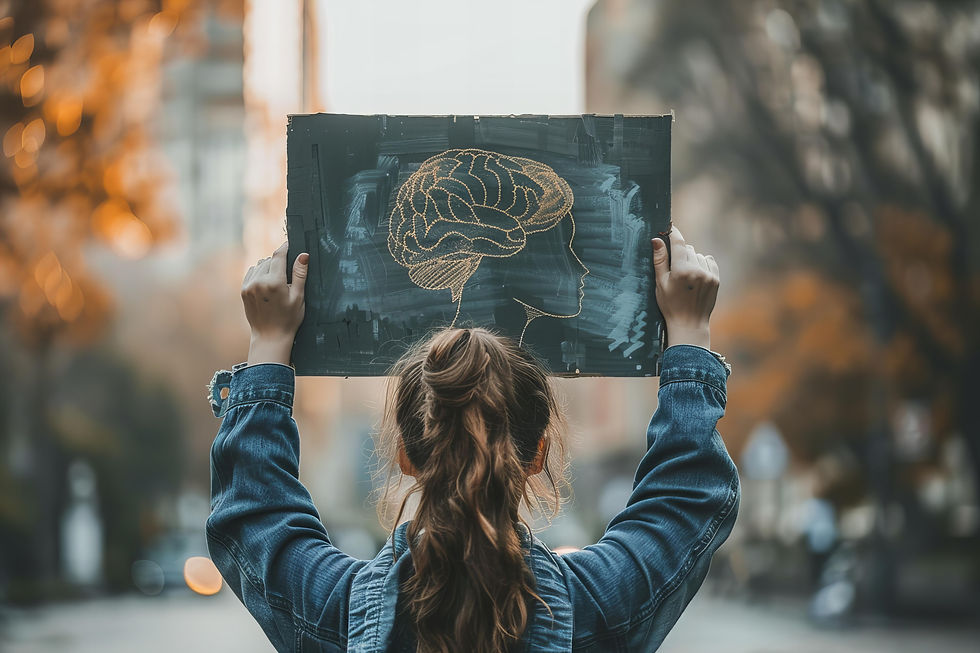Brain Waves and Your Wandering Mind
- Dr. CK Bray

- Mar 25, 2021
- 2 min read

Our minds are rarely still, constantly searching the environment and taking in information. But when our minds wander, where does it roam? Research from UC Berkeley published in the Proceedings of the National Academy of Sciences Journal in January showed that brain waves hold the answer. Brain waves are rhythmic and repeating patterns of neurological activity in the central nervous system. Brain waves are measured through an EEG (electroencephalogram). The EEG uses surface sensors on the head to detect the brain's electrical patterns (brainwaves).
Brain waves are associated with different mind and body states. There are five categories of brainwaves.
Delta (1-4 Hz): Slow brainwaves that occur during sleep (non-REM sleep). This is when healing and regeneration are stimulated.
Theta (4-8 Hz): Theta waves appear during drowsy or sleeping states (REM sleep). Theta brain waves can occur when you are awake but in a very deeply relaxed state of mind. Researchers have found theta waves are essential for processing information and learning.
Alpha (8-12 Hz): Alpha waves dominate during moments of quiet thought and meditative states. It is when your brain is relaxed; you are in a state of wakeful rest. Alpha is when you are present in the moment and focusing on the “now.” This is a state of creativity.
Beta (12-38 Hz): This is our normal waking state of consciousness when attention is directed at cognitive tasks and the outside world. Beta is considered a "fast wave" activity and dominates when we are alert, attentive, and engaged in problem-solving, decision-making, and focused mental activity.
Gamma (30-100 Hz): Gamma is the highest frequency of any brainwave and is associated with peak concentration and a high level of cognitive functioning. They are associated with alert mental states and active information processing that occurs in the cerebral cortex.
The study found an increase in Alpha waves in the prefrontal cortex when the participant's thoughts jumped from one topic to another and decreased Beta waves. This is not a bad thing as your brain needs breaks, and creativity increases with Alpha waves. The good news is that the ability to detect our thought patterns through brain activity is an essential step toward generating strategies for regulating how our thoughts unfold over time. The brain wave app may not be far off!

“Distinct electrophysiological signatures of task-unrelated and dynamic thoughts” by Julia W. Y. Kam, Zachary C. Irving, Caitlin Mills, Shawn Patel, Alison Gopnik, and Robert T. Knight. PNAS
LEARN MORE FROM THE PODCAST




Comments